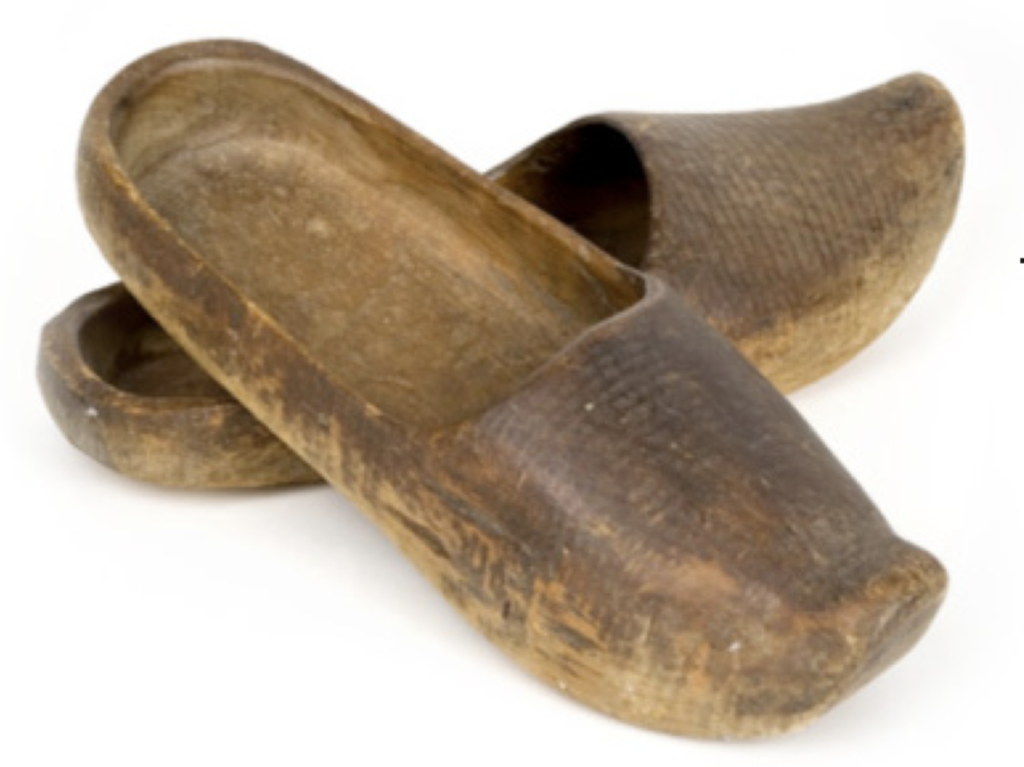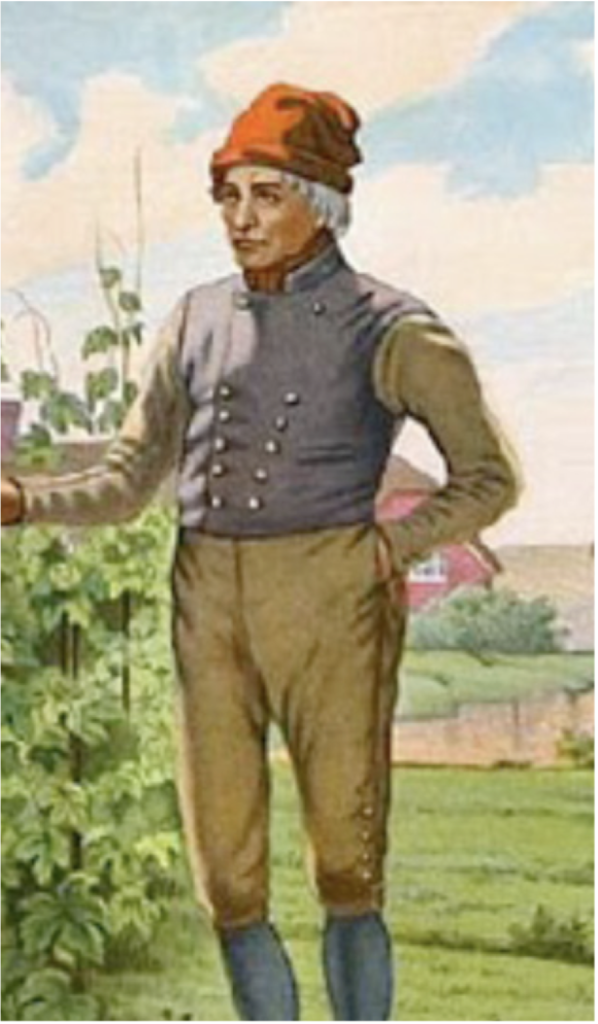by Joe Wagner
One of the ladies in our group has, for years, worn a pair of wooden shoes and is quite enamored with them. I have noticed a few more pairs in the camps and some time ago I began to mildly ponder the propriety of such things. While reading the “New York Journal” for 6 July 1775, I came across an article about a dinner with General Wooster and the officers of the Connecticut line. It listed the toasts offered up during the dinner and one, in particular, caught my eye: Death and Jack Boots, before Dishonour and Wooden Shoes. This raised my brow a bit as it indicates they held a rather negative view of wooden shoes so I decided to keep track of any comments on said shoes that I came across and here are ones that I found.
As to the country people [of France], as well as many in the towns, they are very poor; more than half of them go bare- foot all their lives, the greatest part of the remainder with wooden shoes, and some very few with leather.
[extract of a letter from William Clarendon, Rouain, France, to a friend, London, 10 Oct. 1764 (“The Newport Mercury;” 28 Jan. 1765, p1)]
The Memory of our brave Country-Men who so gallantly defended Derry against King James, preferring the worst of Deaths (Famine) to a Popish Stuart, Brass Money and wooden Shoes.
[one of several toasts offered up at an entertainment celebrating the Feast of St. Patrick (“Boston Post Boy;” 23 March 1767; p3)]
A Correspondent speaking of the Exportation of Calve Skins, says, the Ministry finding they cannot make real slaves of
[opinion piece (“New-Hampshire Gazette;” 11 August 1769; p2)]
the Americans, have form’d the design of making them so in Appearance, and not as common slaves, but those of the most abject kind, viz. like the vassals of France, in Wooden shoes.
For, should the diabolical Doctrine of Roman Catholics, or Popery, take Place; wooden Shoes, Fetters, Chains, Racks, burning to Death, with every other hellish Torture practiced in the infernal INQUISITION, would be the Lot of those who should deny a single Article of the blasphemous Creed of the Church of Rome.
[ad for reprinting a book on Catholicism (“The Boston News- Letter;” 11 Feb 1773; p4)]
That the customs of France is the thing they must choose, Such as arbitrary power and curs’d wooden shoes; That they made Popish laws, we all know to be true;
So d—n the old parliament, heigh! for a new!
[song verse (“Norwich Packet;” 15-22 Dec. 1774; p4)]
I will suppose for a moment, that the Legislature should establish it as a law, that all the people for the future shall wear wooden shoes. In this case there would be no subordination; but my wooden shoes would not be any more agree- able to me because all my fellow-citizens are obliged to wear wooden shoes too.
[opinion piece (“Independent Chronicle;” 6 April 1780; p1)]
The total alteration in the French Government, will render a revisal and alteration of most of our comedies and farces, ab- solutely necessary—all the jokes about wooden shoes, slavery, and the Grand Monarque, that were wont to set honest John Bull in a roar, having, happily for our Gallic neighbours, lost all their point.
[commentary on the French Revolution (“New-York Daily Ga- zette;” 5 Oct. 1789; p2)]
While this is a quite small sampling, none of them give a positive view of wooden shoes. In fact, most of them refer to the people of France wearing wooden shoes. None of them indicate English or Americans wore them. Further, I haven’t found a single mention of wooden shoes in droves of runaway and deserter ads. Since those typically mention all sorts of things in their clothing descriptions and wooden shoes seem to be unusual enough to warrant mention, the lack of their inclusion leads me to believe that nobody had them on.
The geography of the quotes also caught my eye. All of them are from northern papers. I found no mention of wooden shoes in papers from the middle-Atlantic or the south. Granted, there are more papers from the north available and I spend the majority of my time reading them but, I do spend time looking at papers from other regions. In part, I attribute the northern distribution and the negative attitude to the proximity of Canada with its French and Catholic culture and the lingering effects of the French and Indian War on northern colonies/states.
While I found little mention of wooden shoes in English North America, I did find droves of ads for clogs— wooden-soled shoes with cloth or leather uppers and no back around the heel. Leather may have been more common but there are several ads for “brocaded clogs” so cloth uppers certainly existed. Also, I came across a couple ads for “silk tied clogs” whatever those may be.
This certainly has not been an exhaustive study on my part but I did come away with a couple impressions based on what I have read. It seems wooden shoes would not have been at all common for English or Americans. The only mentions of them are from the north and relate to French of the lowest class and Catholics—groups to which few English or Americans would care to admit belonging. Clogs might be more appropriate but there are far more ads for clogs in the 1760s and early 70s than during the period of the war so they prob- ably would not be all that common. Lastly, it seems that only women and children wore them. Final impression: use them for kindling.
Copyright © 2010 Joe Wagner. All rights reserved.

